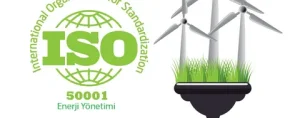Business industrial
China’s Services Industry Roadblocks: Impact on the Economy

Introduction: Understanding China’s Services Industry
The services industry in China, which is very important for its economy, has faced many obstacles lately. This article seeks to understand the hurdles encountered by this sector and analyze their profound effects on China’s overall economic situation. By examining the key roadblocks and exploring potential strategies and solutions, we gain insight into navigating this intricate landscape.
Roadblocks Faced by China’s Services Industry
The service industry in China includes sectors like finance, tourism, hospitality, and technology. These sectors have faced their own set of problems. One significant roadblock is the lack of market liberalization, which hampers foreign investment and limits competition. Additionally, strict regulations and bureaucratic red tape pose challenges for businesses aiming to expand their operations. The need for workforce development adds to the problem caused by the scarcity of skilled professionals.

Photo by Austin Distel on Unsplash
Impact on the Chinese Economy
The Chinese economy is greatly affected by the struggles in the services sector. China is the second-largest economy globally and depends largely on manufacturing. To bring more balance to its economy, China is promoting the services sector. However, the difficulties encountered have made it tricky for this transformation to happen smoothly, impacting economic growth and stability. The small expansion of the services industry impacts job chances, how much money people spend, and the overall diversity of the economy.
Moreover, due to the COVID-19 pandemic, the services industry is encountering even more obstacles. Sectors like hospitality and tourism have been greatly affected by travel restrictions, reduced international tourism, and changes in consumer behavior. This has caused a decrease in revenue and job layoffs. These setbacks have further emphasized the urgency of addressing the roadblocks hindering the services industry’s progress.
Strategies and Solutions
To tackle the challenges in China’s services industry, they can put into action various approaches. Firstly, promoting market liberalization and easing regulations can attract foreign investment and stimulate healthy competition. Streamlining bureaucratic processes and fostering a more business-friendly environment can remove barriers to growth.
Furthermore, investing in education and training programs can address the skills gap, ensuring a competent workforce to support industry expansion. Encouraging innovation and technology adoption within the services sector can also drive efficiency and enhance competitiveness.
Working together with the government, industry players, and relevant stakeholders is really necessary. When we have meaningful conversations and supportive regulations, it helps the services industry to prosper.
Conclusion: Navigating the Challenges
China’s services industry faces significant roadblocks that reverberate throughout the economy. But, if we notice these hardships and use effective approaches, we can move ahead. Market liberalization, reduced bureaucratic obstacles, and investment in workforce development can help China unleash the massive potential of its services sector. Getting past these challenges is important because it will help make the economy more stable and strong. It will also bring about lasting growth and success for everyone in the nation.
In a nutshell, knowing the challenges that China’s services industry confronts and their influence on the economy is crucial for policymakers, industry leaders, and stakeholders. In facing these challenges directly, China can triumph over them, unlock the full potential of its services industry, and chart a course towards a prosperous and diverse economy.
Business industrial
ISO 50001 Certification in Kuwait: A Pathway to Enhanced Energy

As global energy costs rise and sustainability becomes a strategic priority, organizations across sectors are turning to ISO 50001 to build robust energy management systems.
The standard provides a framework that helps companies improve energy efficiency, cut waste, reduce emissions, and achieve long-term operational excellence. Businesses pursuing ISO 50001 Certification in Kuwait are increasingly recognizing the tangible value it delivers.

The following real-world inspired success stories—presented without using any company names—highlight how organizations in manufacturing, hospitality, oil & gas, logistics, and public services have transformed their energy performance after adopting ISO 50001.
These examples also demonstrate how engaging ISO 50001 Consultants in Kuwait, preparing for an ISO 50001 Audit in Kuwait, and understanding ISO 50001 Cost in Kuwait can contribute to significant energy savings and measurable environmental improvement.
1. Manufacturing Plant Achieves Major Energy Savings Through Systematic Monitoring
A medium-sized manufacturing plant producing industrial components faced rising energy costs due to outdated equipment and inefficient processes.
Leadership realized that improving energy performance was critical to staying competitive, so the organization initiated ISO 50001 in Kuwait to redesign its energy management practices.
Challenges
- High energy consumption during peak production
- Lack of real-time energy monitoring
- Inefficient compressor usage
- No formal energy baseline for comparison
With guidance from experienced ISO 50001 Consultants in Kuwait, the plant conducted a detailed energy review, installed smart meters, and implemented better scheduling for energy-intensive operations.
Measurable Improvements
- 18% reduction in total energy consumption within the first year
- Significant cost savings due to optimized compressor operations
- Reduced maintenance downtime
- Creation of a continual improvement culture
The plant reported that although the ISO 50001 Cost in Kuwait required budgeting for new meters and staff training, the investment paid for itself within months through energy savings.
2. Hotel Chain Improves Guest Experience While Reducing Utility Bills
A large hotel chain operating multiple properties was struggling with high electricity and water bills. With increasing pressure to adopt sustainable tourism practices, the organization chose to implement ISO 50001 Certification in Kuwait to streamline energy use.
Initiatives Implemented
- LED lighting upgrades across all guest rooms and public areas
- Smart HVAC controls and motion sensors
- Training staff on energy-efficient housekeeping practices
- Introducing guest-awareness campaigns about energy use
Results Achieved
- 25% reduction in annual electricity consumption
- Improved indoor temperature stability and guest comfort
- Enhanced brand reputation for sustainability
- Lower operational expenses and improved profit margins
During the ISO 50001 Audit in Kuwait, auditors acknowledged the hotel’s strong commitment to continuous improvement, particularly in controlling HVAC losses during peak seasons.
3. Oil and Gas Facility Lowers Emissions via ISO 50001 Framework
Action Steps
- Conducted a comprehensive energy gap assessment
- Optimized boiler operations and heat recovery systems
- Introduced KPIs for energy performance
- Engaged multiple departments in the energy-management program
Positive Outcomes
- 14% reduction in fuel consumption within the first 18 months
- Lower greenhouse gas emissions
- Better monitoring of critical equipment
- Stronger compliance with national energy regulations
Despite the initially higher ISO 50001 Cost in Kuwait for technical improvements, the facility achieved significant long-term cost avoidance by preventing energy waste.
4. Logistics and Distribution Center Improves Operational Efficiency
A logistics firm operating warehouses across Kuwait dealt with rising energy expenses due to long working hours, outdated forklifts, and inefficient lighting. Implementing ISO 50001 Certification in Kuwait helped reshape operations across all facilities.
Changes Introduced
- Replacing old forklifts with energy-efficient electric models
- Installing daylight-sensitive LED systems
- Optimizing warehouse layout to reduce equipment travel distance
- Regular energy-performance meetings with team leaders
Impact
- 20% reduction in warehouse electricity consumption
- Reduced carbon footprint
- Faster warehouse operations due to layout improvements
- Higher employee awareness of energy reduction goals
The organization noted that the ISO 50001 Audit in Kuwait encouraged better tracking of forklift efficiency, resulting in reduced energy costs per shipment.
5. Government Facility Enhances Sustainability and Reduces Waste
A large government building sought to align with national sustainability goals by pursuing ISO 50001 in Kuwait. Public facilities often operate for long hours, making energy optimization crucial.
Implementation Strategy
- Integrating smart building-management systems
- Upgrading outdated chillers with high-efficiency models
- Creating dashboards for real-time energy tracking
- Involving employees through training and awareness drives
Key Benefits
- 30% reduction in annual energy bills
- Enhanced indoor air quality
- Strengthened public image as a sustainability leader
- Reduction in operational inefficiencies
The cost of the project was initially high, but government incentives helped offset part of the ISO 50001 Cost in Kuwait, making it easier to implement.
Conclusion
These real-world inspired examples demonstrate that ISO 50001 is more than just a certification—it is a practical pathway to measurable energy improvement.
Whether in manufacturing, hospitality, logistics, oil & gas, or public services, organizations adopting ISO 50001 Certification in Kuwait consistently report lower energy costs, stronger environmental performance, and improved operational efficiency.
With the support of knowledgeable ISO 50001 Consultants in Kuwait, thorough planning for ISO 50001 Audit in Kuwait, and clear understanding of ISO 50001 Cost in Kuwait, businesses can unlock long-term savings and build a sustainable future.
Business industrial
Differentiating Shared Services vs. BPO: What Businesses Need to Know

Introduction
As companies grow, so do their operational demands. Managing finance, HR, IT, customer service, and administrative tasks becomes more complex and costly. To operate more efficiently, organizations often explore support models like Shared Services and Business Process Outsourcing (BPO).
These two models might seem similar, but they serve different purposes—and choosing the right one can significantly impact a company’s costs, productivity, and long-term growth. In this blog, we break down the key differences between shared services vs. BPO, helping your business make the right decision. Companies around the world rely on trusted outsourcing partners like SixEleven BPO to improve efficiency while lowering operational costs.
What Are Shared Services?
A shared services model centralizes internal business functions within the company. Instead of each department or branch handling tasks separately, a dedicated internal team supports the entire organization from one location.
For example, a corporation might establish a Shared Services Center (SSC) for:
- HR administration
- Payroll and timekeeping
- Finance and accounting
- Procurement
- IT support
- Data management
Key Characteristics of Shared Services
- Owned and operated by the company: The business manages the team, processes, and infrastructure.
- Focus on standardization: Shared services optimize workflows across departments to reduce duplication and errors.
- Internal cost-savings model: By centralizing teams, companies reduce operational expenses compared to having separate teams in each department.
- Best for large enterprises: Shared services are ideal for organizations with high-volume, repetitive processes.
Advantages of Shared Services
- More control over operations
- Standardized internal processes
- Better data governance
- Closer alignment with company culture
Limitations of Shared Services
- High setup cost
- Requires large headcount
- Limited scalability
- Still dependent on internal hiring and management
- Not ideal for small and medium enterprises (SMEs)
What Is Business Process Outsourcing (BPO)?

BPO involves hiring an external company to handle specific tasks or entire business functions. Instead of building an internal department, businesses outsource their operations to specialized service providers, often located offshore.
Popular BPO solutions include:
- Customer service & technical support
- Appointment scheduling
- Sales & lead generation
- Data entry & back-office processing
- Finance, accounting & payroll
- Content moderation
- Healthcare support
- IT helpdesk services
Organizations partner with leading outsourcing firms like SixEleven BPO to reduce costs, access trained talent, and ensure 24/7 efficiency.
Key Characteristics of BPO
- Operated by an external provider: The outsourcing company is responsible for hiring, training, and managing the team.
- Flexible and scalable: Businesses can scale up or down quickly depending on demand.
- Cost-efficient: Offshore outsourcing can save companies 60–70% in labor and operational costs.
- Focus on quality and expertise: BPO providers specialize in the tasks they support, offering higher efficiency and performance.
Advantages of BPO
- Lower operational costs
- Access to global talent
- 24/7 support availability
- Fast deployment and team expansion
- No infrastructure or HR burden
- Professional management and better productivity
Limitations of BPO
- Requires communication alignment
- Needs clear documentation and expectations
- Cultural differences (minimal when outsourcing to the Philippines)
Shared Services vs. BPO: Key Differences
1. Ownership and Control
- Shared Services: Operated internally.
- BPO: Outsourced to a third-party provider.
2. Cost Structure
- Shared Services: Lower cost than multiple in-house teams but still expensive to maintain.
- BPO: Highest cost savings—offshore outsourcing reduces expenses by up to 70%.
3. Scalability
- Shared Services: Limited, depends on internal hiring and budget.
- BPO: Highly scalable with fast team expansion.
4. Expertise
- Shared Services: Generalized, company-trained teams.
- BPO: Specialized teams with industry-specific experience.
5. Setup Requirements
- Shared Services: Requires office space, technology, HR, and management.
- BPO: No setup needed provider already has teams, systems, and infrastructure.
6. Best Suited For
- Shared Services: Multinational enterprises with high-volume internal processes.
- BPO: Businesses of all sizes, especially those seeking cost savings and efficiency.
Which Model Is Right for Your Business?
Both models offer strong benefits, but the best choice depends on your business goals, budget, and long-term plans.
Choose Shared Services If:
- You want full internal control
- You’re a large enterprise with extensive internal processes
- Budget is not a major concern
- You want to standardize internal workflows
Choose BPO If:
- You want to drastically reduce costs
- You need fast scalability
- You want to free your internal team from time-consuming tasks
- You need trained professionals instantly
- You require 24/7 support
- You want to focus on core business growth
Why Many Companies Prefer BPO Today
Modern businesses prioritize flexibility, speed, and cost-effectiveness—areas where outsourcing excels. BPO providers like SixEleven BPO deliver trained teams, industry expertise, and customized workflows without the heavy investment required for shared services.
Companies benefit from:
- Lower labor costs
- Ready-to-go trained teams
- Faster delivery times
- Improved customer satisfaction
- Stronger operational performance
For many organizations, outsourcing is not just a cost-saving decision—it is a strategic advantage.
Challenges and Considerations
1. Shared Services Challenges
- High initial investment in infrastructure and staff
- Limited flexibility compared to outsourcing
- Dependence on internal resources for technology and expertise
2. BPO Challenges
- Less direct control over processes
- Potential communication and cultural barriers in offshore BPO
- Risk of data security and compliance issues
- Dependence on service-level agreements for quality assurance
Factors Businesses Should Consider When Choosing Between Shared Services and BPO
- Core vs. Non-Core Activities: Identify which functions are essential to your business strategy. Core functions may benefit more from shared services, while non-core functions may be suitable for BPO.
- Cost vs. Long-Term Investment: Evaluate whether your organization can afford the initial investment for shared services or if immediate cost savings through BPO are more strategic.
- Control Requirements: Determine the level of control your organization needs over processes. Shared services provide more control, while BPO involves reliance on external providers.
- Scalability Needs: If rapid growth or seasonal fluctuations are expected, BPO offers more scalable solutions.
- Expertise and Technology Access: Consider whether your organization has the internal expertise and technology to manage processes efficiently or if an external provider can deliver better results.
- Risk and Compliance: Evaluate operational, legal, and security risks associated with outsourcing versus maintaining an internal shared services model.
Conclusion
Understanding the differences between shared services and BPO is essential for businesses aiming to improve efficiency, reduce costs, and enhance overall operations. Shared services provide centralized, internally managed processes with long-term control and consistency, while BPO offers flexibility, access to specialized expertise, and potential cost savings through external providers. Businesses should assess their core activities, scalability needs, control preferences, and risk tolerance before making a decision. By carefully considering these factors, organizations can select the right model to drive efficiency, support growth, and achieve strategic goals.
Final Thoughts
Shared services and BPO both play important roles in business operations, but they serve different needs. Shared services focus on internal centralization, while BPO offers external expertise, scalability, and significant cost savings.
Companies looking for efficiency, flexibility, and rapid growth often choose outsourcing partners like SixEleven BPO to handle customer service, back-office, sales, and support tasks. With the right outsourcing strategy, businesses can enhance performance, reduce costs, and stay competitive in today’s fast-changing marketplace.
More: Establish your brand effortlessly with LgoConnects virtual office BGC offering premium business identity without long-term rent or overhead expenses.
Business industrial
Best Solar Panels for Australian Homes

Introduction
Investing in solar energy is one of the most effective ways Australian homeowners can decrease electricity bills, improve energy independence, and contribute to a greener future. With so many brands, technologies, and installation choices available, understanding how to choose suitable solar panels is essential.
At Electrical Masters, we follow Australian solar rules and Clean Energy Council (CEC) standards to ensure every household obtains a system that’s safe, durable, and built for long-term performance. When customers search for the best solar panels, they are usually looking for things that offer durability, efficiency, and long warranties—qualities which match perfectly with what our team provides.
Why Solar Energy Is Beneficial for Australian Homes
Solar energy provides multiple advantages for homeowners, making it a popular choice across Australia.
- Lower Electricity Bills: Solar panels generate free electricity from sunlight, reducing reliance on the grid. Homeowners can save hundreds or even thousands of dollars annually.
- Energy Independence: Generating your own electricity reduces dependence on fluctuating energy prices. With battery storage, you can even power your home during peak times or outages.
- Environmental Impact: Solar energy reduces greenhouse gas emissions, helping combat climate change and promoting a sustainable future.
- Property Value: Homes with solar panels often have higher resale value and attract environmentally conscious buyers.
- Government Incentives: Australian homeowners can benefit from federal and state rebates, making solar energy more affordable.
These benefits make investing in solar a long-term solution that pays off financially and environmentally.
Evaluating the Quality of Solar Panels
Selecting high-quality solar panels requires more than just comparing price tags. It needs evaluate efficiency, durability, certification, installation quality, and long-term return on investment.
Get your free solar consultation today with Electrical Masters and get free quote!
Power Efficiency and System Performance
Solar panel performance controls how much sunlight can be turned into usable energy. High-efficiency panels can be used for roofs with limited area or for families with greater energy demands. Technological developments like as half-cut cells, mono crystal designs, and advanced anti-reflective coatings improve maximise performance throughout the year.
Long-Lasting Panels for Australian Climates
Australia’s the environment may be difficult on solar equipment. Panels must withstand:
- Extreme UV exposure
- High summer temperatures
- Heavy rainfall
- Coast saline fog
- Strong winds and storms
Quality panels include solid frames, tempered glass. Choosing solid equipment ensures less maintenance difficulties and consistent energy production.
Selecting the Ideal Solar Panels for Your Home
Electrical Masters values safety, consistency, and long-term performance. We suggest adopting solar systems that include:
- CEC-approved panels and inverters
- Strong warranties with local manufacturer support
- High efficiency and strong tolerance to temperature
- Guaranteed real-world performance in Australian conditions
- Installations completed by authorised professionals
Our skilled team helps you through the entire process from consultation to continuing assistance, making solar installation straightforward, transparent, and stress-free.
How to Choose the Right Solar Panels
Selecting the right solar panels involves evaluating factors such as efficiency, durability, warranty, and price. Here’s what Australian homeowners should consider:
1. Efficiency
Solar panel efficiency measures how effectively panels convert sunlight into electricity. Higher efficiency panels produce more energy in limited roof space, which is important for smaller homes. Look for panels with efficiency ratings above 18% for optimal performance.
2. Durability and Build Quality
Durable panels withstand harsh weather conditions, including high temperatures, heavy rain, and strong winds. Panels made with high-quality materials last longer and maintain performance over time.
3. Warranties and Reliability
A strong warranty indicates the manufacturer’s confidence in their product. Most reliable panels offer 25-year performance guarantees and 10-12 years on product quality. Ensure your system comes with a comprehensive warranty to protect your investment.
4. Technology Type
There are different types of solar panels available:
- Monocrystalline: High efficiency and space-saving, ideal for limited roof areas.
- Polycrystalline: More affordable, slightly lower efficiency, suitable for larger roofs.
- Thin-Film: Lightweight and flexible, but less efficient than crystalline panels.
Choosing the right technology depends on roof space, budget, and energy needs.
5. Brand Reputation
Select solar panels from trusted brands with proven performance in Australia. Reliable brands have good after-sales support and quality assurance, which ensures peace of mind.
The Importance of Proper Installation
Even the best solar panels cannot perform optimally without professional installation. Electrical Masters follows Clean Energy Council (CEC) standards to ensure safe and effective setups.
- Correct Panel Orientation: Panels should face north in Australia for maximum sunlight exposure.
- Optimal Tilt Angle: Proper angles improve energy output throughout the year.
- High-Quality Wiring: Safe and efficient electrical connections prevent energy loss and hazards.
- Battery Integration: For homes using storage systems, professional installation ensures compatibility and reliability.
Professional installation not only maximizes efficiency but also protects your warranty and investment.
Maintenance Tips for Long-Term Performance
Maintaining solar panels is simple but essential to ensure peak performance.
- Regular Cleaning: Dust, leaves, and debris can reduce efficiency. Clean panels with water and a soft cloth.
- Visual Inspections: Check for cracks, loose connections, or shading issues.
- Monitoring Output: Use energy monitoring apps or systems to track performance and detect any problems early.
- Professional Check-Ups: Schedule periodic inspections with certified technicians to maintain warranty compliance and ensure safety.
Following these maintenance tips ensures your panels continue generating maximum energy for years.
Boosting Energy Output and Reducing Costs
Choosing the right solar panels is simply the first step. Homeowners can further maximise savings and efficiency by:
- Adding battery storage: Store extra electricity for usage at night or during grid failures
- Monitoring system performance: Use apps and smart meters to track energy output and consumption
- Routine maintenance: Inspect and clean panels periodically to maintain optimal performance.
A well-designed system not only saves power bills but also boosts property value and adds to sustainability over time. Call Electrical Masters now to learn how our solar solutions can save you money every month!
Boosting Energy Output and Reducing Costs
Choosing the right solar panels is simply the first step. Homeowners can further maximise savings and efficiency by:
- Adding battery storage: Store extra electricity for usage at night or during grid failures
- Monitoring system performance: Use apps and smart meters to track energy output and consumption
- Routine maintenance: Inspect and clean panels periodically to maintain optimal performance.
A well-designed system not only saves power bills but also boosts property value and adds to sustainability over time. Call Electrical Masters now to learn how our solar solutions can save you money every month!
Choosing a Solar Installer You Can Trust
Selecting a reputable solar installer is as important as choosing the panels themselves. Electrical Masters follows all Australian solar rules and CEC standards to deliver safe and high-quality installations. A reliable installer provides:
- Free consultations and site assessments
- Transparent pricing and system recommendations
- Assistance with government rebates and incentives
- Professional installation, testing, and maintenance support
Working with certified installers ensures a hassle-free experience and long-lasting system performance.
Financial Benefits of Investing in Solar Panels
Investing in solar panels is not just environmentally responsible—it also makes financial sense:
- Reduced Electricity Bills: Generate your own energy and pay less to the grid.
- Feed-in Tariffs: Sell excess electricity back to the grid for extra savings.
- Return on Investment: Solar panels often pay for themselves within 4-7 years, depending on usage and system size.
- Energy Security: Reduce exposure to rising electricity prices in the future.
These financial advantages make solar a smart, long-term investment for Australian homeowners.
Conclusion
Investing in solar panels is a long-term decision that brings financial savings, increased energy independence, and a good environmental impact. Choosing a reliable, efficient, and properly installed system ensures that you receive years of continuous performance. At Electrical Masters, we specialise in helping Australian households select the best solar panels, providing guidance, installation, and ongoing support to enhance your system’s efficiency and lifetime. By choosing trustworthy solar solutions, you can enjoy a sustainable and cost-effective energy future with confidence.
Frequently Asked Questions
Q1. Do solar panels work well in hot climates?
Yes, but high temperatures may decrease efficiency. This is why choosing panels with strong coefficients of heat is essential for Australian environments.
Q2. What size solar system should I install?
System size depends on your daily energy consumption, roof space, location, and whether you want to add a battery or future EV charging.
Q3. How do I maintain my solar panels?
Regular evaluations, routine cleaning, and performance evaluations help ensure your system performs at its best year-round.
Q4. Are all solar panels eligible for government rebates?
Only CEC-approved panels and installations performed by accredited professionals qualify for Small-scale Technology Certificates (STCs).
-
Business2 years ago
Cybersecurity Consulting Company SequelNet Provides Critical IT Support Services to Medical Billing Firm, Medical Optimum
-
Business2 years ago
Team Communication Software Transforms Operations at Finance Innovate
-
Business3 years ago
Project Management Tool Transforms Long Island Business
-
Business2 years ago
How Alleviate Poverty Utilized IPPBX’s All-in-One Solution to Transform Lives in New York City
-
health3 years ago
Breast Cancer: The Imperative Role of Mammograms in Screening and Early Detection
-
Sports3 years ago
Unstoppable Collaboration: D.C.’s Citi Open and Silicon Valley Classic Unite to Propel Women’s Tennis to New Heights
-
Art /Entertainment3 years ago
Embracing Renewal: Sizdabedar Celebrations Unite Iranians in New York’s Eisenhower Park
-
Finance3 years ago
The Benefits of Starting a Side Hustle for Financial Freedom































